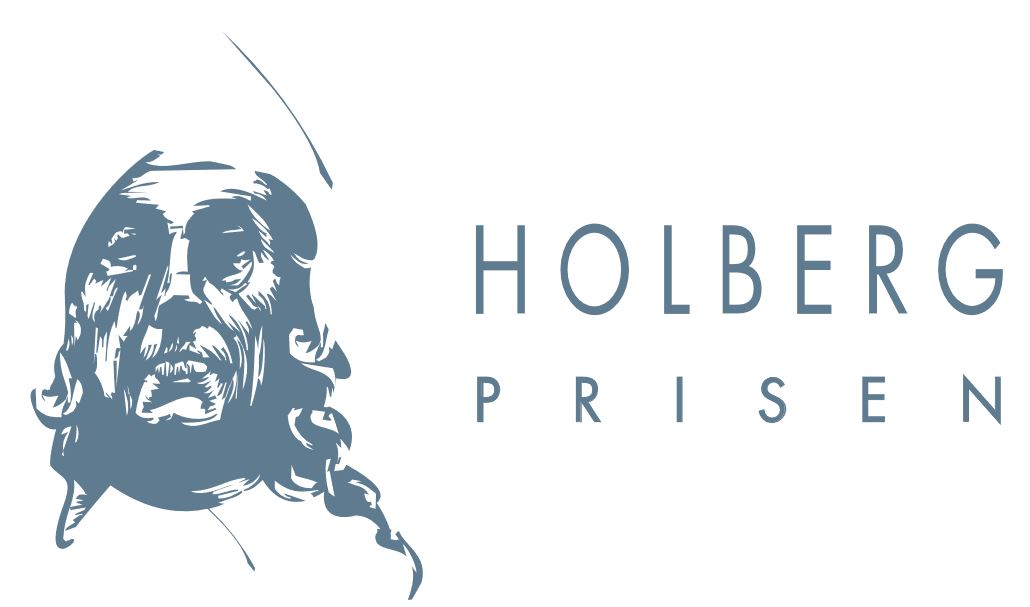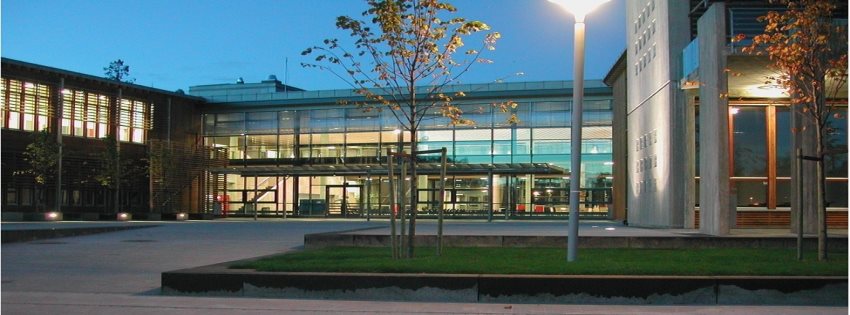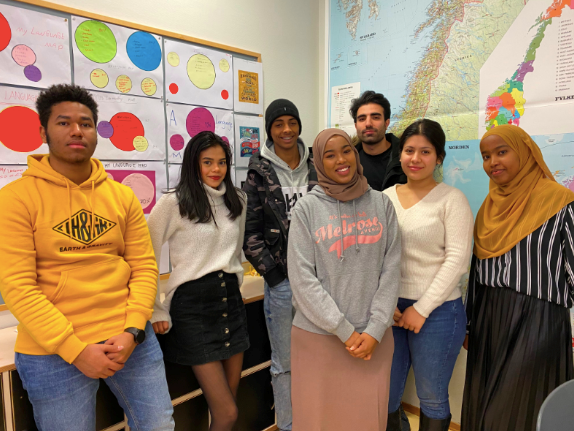The above quotation is from the research report Our pride in being multilingual, written by Noah Abdulghani, Mahsa Akhtari, Mehrnoosh Akhtari, Bita Azizi, Khaled Moauia Bakkour, Henok Kahsay Ghebre, Henok Gebremedhn Gebremaryam, Maaz Hamid Idris, Lee Liam Guioguio Jakobsen, Wael Kattan, Kristoff Laptas, Naimo Ahmed Mohamed, Najmo Ahmed Mohamed, Cristian Sion, Abiel Kidane Teklehaimanot, Lwam Mengsteab Tesfamichael, and Ahmad Nedal Ziwaneh. The authors are ‘kort botid’ (newly-arrived) students at Nadderud Videregående (upper secondary) school in Bærum just outside Oslo. Together they speak 12 different languages, in addition to learning both Norwegian and English as additional languages. With support from their English teacher, Elaine Fleischer, and school librarian, Åsne Hestnes, they conducted a youth participatory action research (YPAR) study on multilingualism in their school from autumn 2019 through spring 2020, culminating in a report. MultiLing's Haley De Korne had the pleasure of assisting with the project as a research consultant.
Holbergprisen i skolen

These young researchers were one of 20 upper secondary school classes around Norway selected to compete in the annual Holbergprisen i skolen. This competition for the best student-conducted research within the humanities, social sciences, law or theology is connected to the prestigious Holberg Prize. Although the final stages of the project became more challenging due to the sudden shift to digital schooling and the COVID-19 pandemic, the group completed and submitted their report. Although the Nadderud group was not among this year’s top three winners, everyone involved viewed the successful completion of the research project and report to be a huge achievement.
Multilingualism as a resource
Fleischer comments that she had several motivations for initiating a research project on multilingualism in her class, including an on-going change in the Norwegian national curriculum which sets the goal for teachers to use ‘multilingualism as a resource’ (flerspråklighet som ressurs) in certain subjects, including English where she primarily teaches. “I thought by taking part in the competition my class of multilingual students could become researchers and dig deeper into what this goal is about and how it would transpire in the classroom. Another more important reason I wanted to take part is that I have worked with newly-arrived students for over 10 years. I am constantly promoting them as students that are more than being labelled as “newly arrived”, so this project was a gateway to show my students in a new light at school.” The students took on different research tasks depending on their interests and abilities, and both Fleischer and Hestnes were repeatedly impressed by their engagement and what they produced.
Data collection and findings
The students collected data on the linguistic landscape (including the digital landscape) of the school, the language profiles of students in the school, interviews with teachers and students, and their own personal reflections as multilingual students. Their resulting report analyses language use in the school, the attitudes and experiences of several teachers and students, and concludes with recommendations for improving the educational experience of multilingual students in school. Based on their own experiences of challenges, social exclusion, and self-doubt when learning and using new languages, the students discussed how multiple barriers will need to be addressed in order for multilingualism to truly be seen and used as a resource.
The list of recommendations in their report includes:
- “Many multilingual students came from migrant backgrounds whose guardians have moved to another place to have a peaceful life. It is important for teachers to take every step they can to make them feel comfortable in the new surroundings.
- Multilingualism requires working together. Teachers should work together on how to use multilingualism in a class in order to make it easier for multilingual students to learn the new language. Some of the ways can be doing a summary at the end of the class by using easier words to understand.
- Make the Nadderud homepage more multilingual. Some schools have “windows” for information in English, French, Spanish and German. Our Nadderud homepage could have the same but also include Arabic for example because that is the lingua franca of many of us.
- An idea could be to pair the student with a knowledgeable “buddy” to cope up with the task that is given by the teachers, in that way they will both understand and learn. They also have the capacity to act as mentors during the inevitable trials that lie ahead for each new student.
- Do not look at multilingualism in a negative way so that those who are multilingual do not feel outside the group or class.
- Many multilingual students believe that teachers do not understand how difficult it is to learn several languages at once, so let me tell to them: Dear teacher, it is too much to expect us to be perfect in our first phase of learning the language and you don't have to be annoyed at us because we mix between Norwegian and English. It is of course not because we want to, or mean it, but it is because of the many different language words that fly around in our brain. We hope you fully understand this.”
Although there were many challenges in completing the project, the students showed impressive skill in stepping into positions as researchers. Fleischer commented that "At the start of the project I was nervous about how the students would cope with the tasks. What surprised me was how they really felt good about reading academic work. I was thrilled to see how students excelled in their engagement and produced some really good work. I also enjoyed seeing how some students stretched themselves to deliver despite the corona situation.” De Korne advised in the use of YPAR research methodology, and commented that “It was exciting to see genuine collaboration between the teachers and students around the question of how to improve the situation for multilingual students. Youth participatory action research is a perfect methodology for this, which I hope other class groups might explore and use.” She encourages other interested teachers to have a look at some of the YPAR resources available on-line, and to reach out to her and MultiLing for support if they are interested in a similar project. Outside of school, Fleischer has started a Facebook group called “Engelsk for minoritetsspråklige/ flerspråklige lærere/ elever” where she engages with other teachers in discussions about multilingual classrooms in Norway, which interested teachers are also encouraged to check out.
A valuable contribution to school
Following through on the project, Fleischer has sent the students’ final report to the entire staff at Nadderud. She notes, “They thought it was great and now want to systematically work with the findings to improve things for students that are new to Norway. I told this to my class and they were really excited about the prospect of them making a valuable contribution to school.”
As the student-researchers wrote in their report, “We have started to have hope about changing our surroundings, and how being able to use other languages than Norwegian can maybe help us in our learning. We hope our project will lead to some positive changes.”

